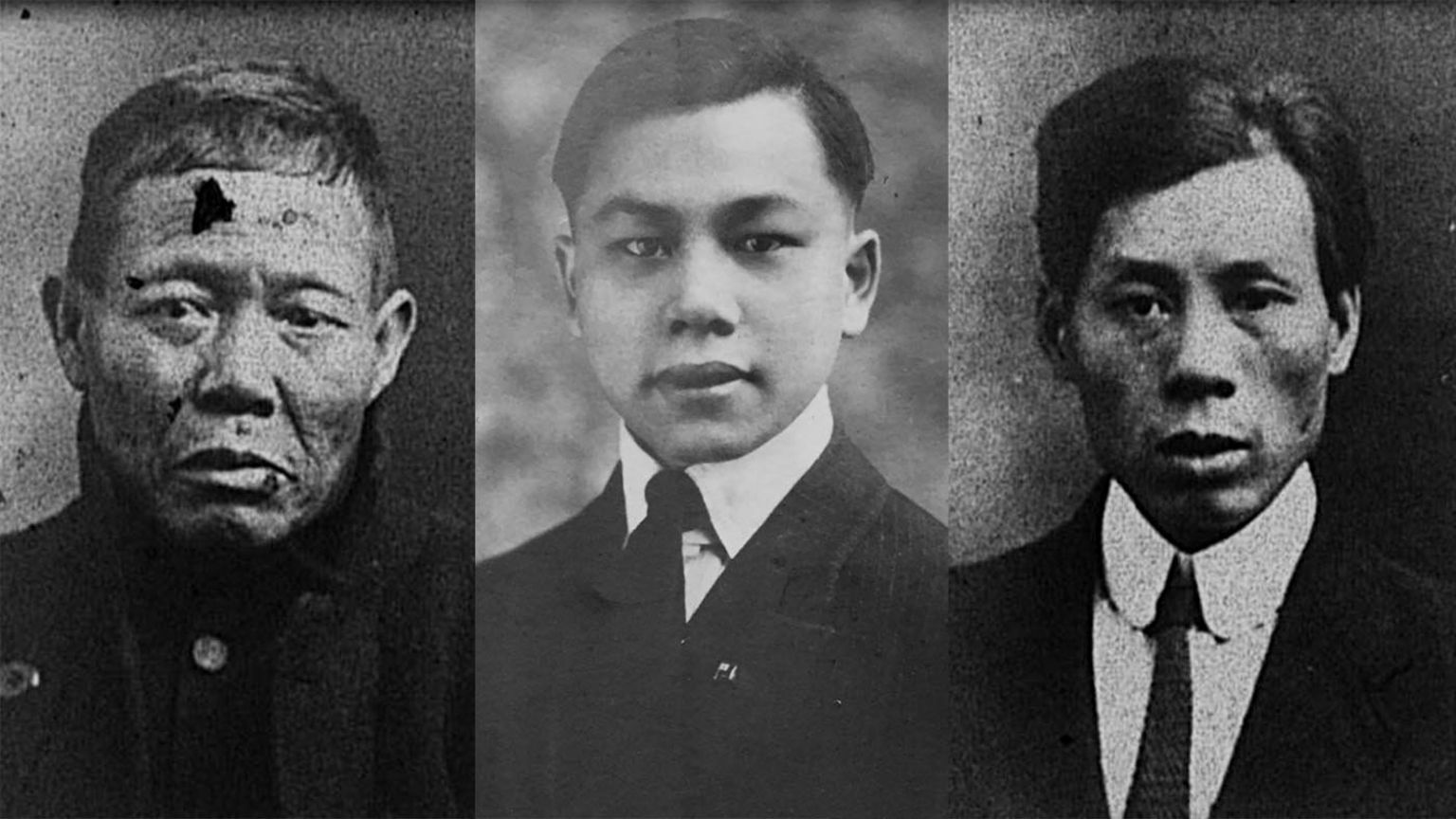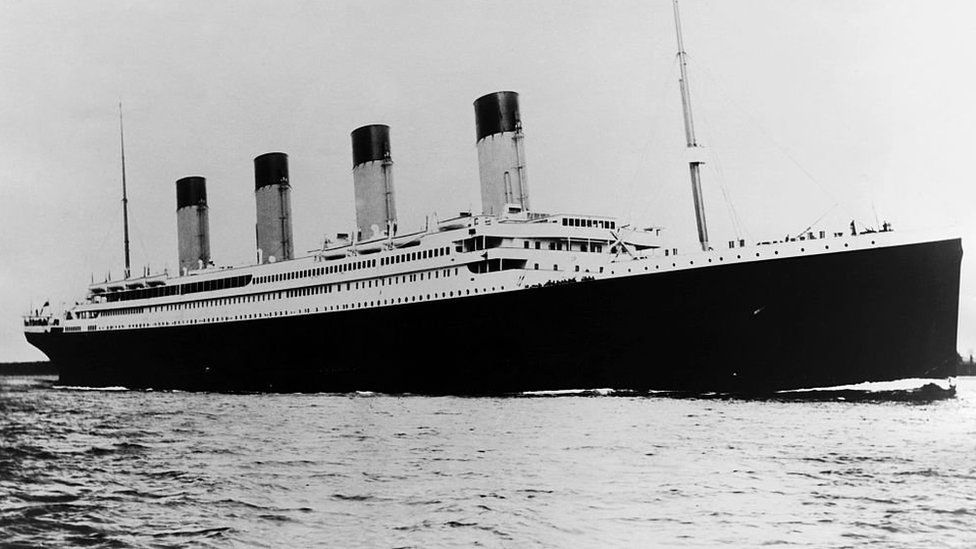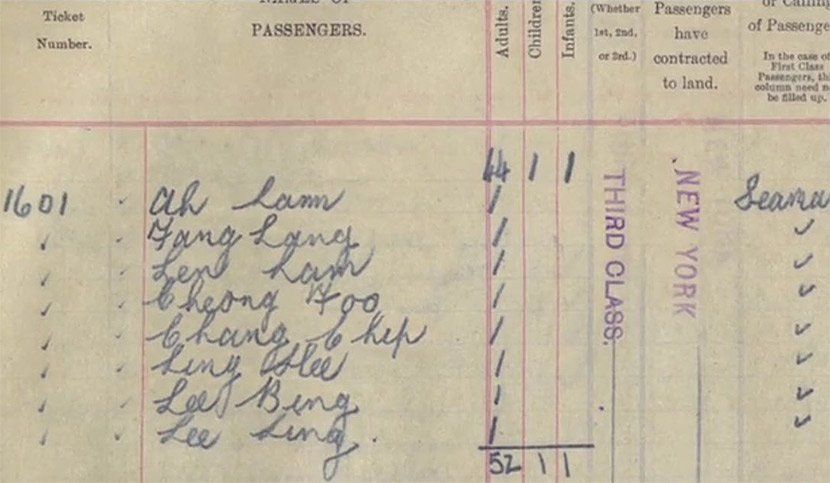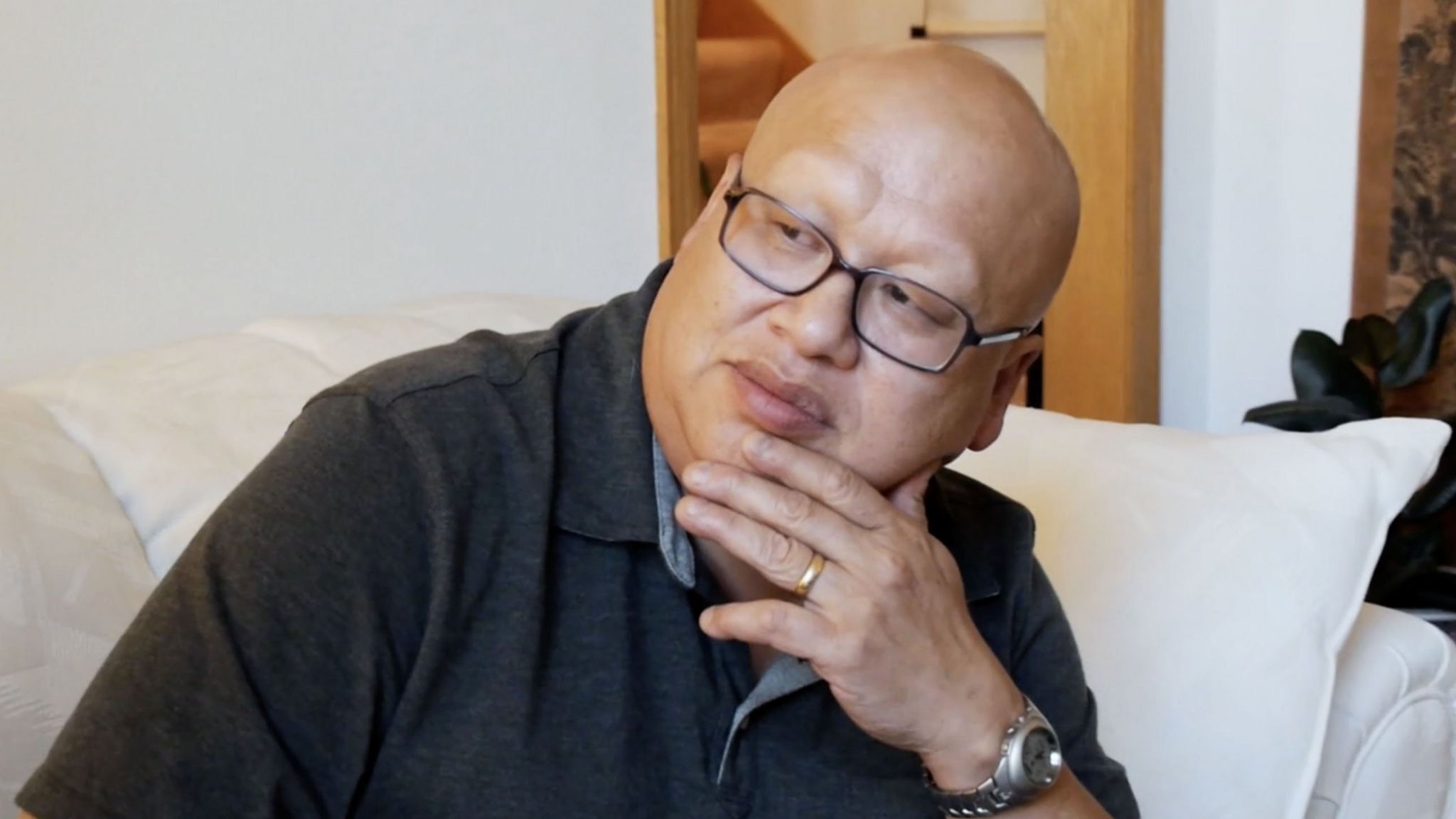By Zhaoyin Feng and Yitsing Wang
BBC World Service
- Published 1 day ago
 IMAGE COPYRIGHTLP FILMS
IMAGE COPYRIGHTLP FILMSWhen the luxurious British passenger ship Titanic sank into the Atlantic Ocean in April 1912, thousands of people fell into the frigid waters.
Only one of the lifeboats that escaped the sinking ship turned back to search for potential survivors. In the darkness, the rescuers found a young Chinese man clinging to a wooden door, shivering but still alive.
That man was Fang Lang, one of six Chinese survivors of the Titanic, and his rescue would go on to inspire a famous scene in the 1997 Hollywood blockbuster Titanic.
But their miraculous survival was not the end of their ordeal.
The six men disappeared from history - until now. A documentary film that has just premiered in China, The Six, shines a spotlight on their identities and lives, 109 years after the doomed voyage.
It uncovers a tale beyond the Titanic, a story shaped by racial discrimination and anti-immigration policy that has taken on particular resonance today following recent anti-Asian abuse in the US.
Who were the six Chinese survivors?
The men were identified as Lee Bing, Fang Lang, Chang Chip, Ah Lam, Chung Foo and Ling Hee. They were believed to be sailors heading to the Caribbean for work.
"As a group of people together, they are uniquely unknown," Arthur Jones, British filmmaker and the director of The Six, tells the BBC.
 IMAGE COPYRIGHTGETTY IMAGES
IMAGE COPYRIGHTGETTY IMAGESThe Chinese survivors' names were on the ship's passenger list, and news articles covering the Titanic's sinking briefly mentioned them.
But unlike other Titanic survivors who received praise in the press, the Chinese men were vilified due to the anti-Chinese sentiment in the West in the early 20th Century, according to historians and researchers.
In a report filed days after the sinking, for instance, The Brooklyn Daily Eagle called the Chinese survivors "creatures" who had sprung into the lifeboats "at the first sign of danger" and concealed themselves beneath the seats.
But the documentary production team's research showed this claim was untrue.
They built a replica of the Titanic's lifeboat and found that it would have been impossible for the Chinese men to hide unseen. "I think we see the same thing today. We find immigrants [were] scapegoated by the press," Mr Jones says.
Other media coverage at the time accused the Chinese men of having dressed as women in order to get priority to board the lifeboats.
 IMAGE COPYRIGHTLP FILMS
IMAGE COPYRIGHTLP FILMSTitanic historian Tim Maltin says there is no proof the Chinese survivors were stowaways or disguised themselves as women.
"These were stories made up by the press and the public after the event," he tells the BBC.
The rumours may have stemmed from a stigma attached to many male survivors of the Titanic, as at the time the general public felt that women and children should have been prioritised in the rescue.
According to Mr Maltin, the Chinese men tried to help other survivors. Fang Lang, the man who lashed himself to a floating door, later rowed on the lifeboat that rescued him and helped to ferry everyone on board to safety.
What happened to them after the accident?
Turned away from the US, the six men were sent to Cuba. They soon found their way to the UK, where there was a shortage of sailors as many British sailors were enlisted in the army during World War One.
Chang Chip became increasingly unwell after the ill-fated night, and eventually passed away from pneumonia in 1914. He was buried in an unmarked grave in a cemetery in London.
The rest worked together in Britain until 1920, when the country suffered from a post-war recession and anti-immigrant feelings were running high.

A few of the Chinese men married British women in the UK and had children. But an anti-immigrant policy forced them to depart the country without notice, leaving their loved ones behind.
"And it wasn't their fault. All of these families were really driven [apart] by politics, something they didn't really have any control over," Jones says.
Ah Lam was deported to Hong Kong, while Ling Hee boarded a steamboat heading for Kolkata (Calcutta) in India.
Lee Bing immigrated to Canada, while Fang Lang, after sailing between Britain and Hong Kong for years, became a citizen of the country that once rejected him - the US.
Parallels between history and the present day
Tom Fong, the son of Fang Lang, was born in Milwaukee, Wisconsin nearly half a century after the Titanic sinking. The family's last name has various spellings in English.
For decades, he knew nothing about his father's experience on the "unsinkable".
"He (Fang Lang) never spoke about it. Not to me, at least or to my mother," Mr Fong tells the BBC.
Mr Fang passed away in 1985 at the age of 90. It was not until 20 years after his death, did Mr Fong first learn from a family member that his father had survived the epic shipwreck.

Mr Fong thinks his father may have kept his Titanic survival as a secret from him because of a mix of trauma and stigma.
"There was a lot of information saying they were sneaking under the boat, and they dressed up like women…" he says. "Stories like that were circulating at the time."
When the research team of The Six tracked down descendants of the survivors, many of them were still reluctant to share their families' stories due to the stigma experienced by their family members a century ago.
Growing up in Wisconsin, Mr Fong witnessed many incidents where his father had to fight back against racism, including punching a man who called them derogatory names.
 IMAGE COPYRIGHTGETTY IMAGES
IMAGE COPYRIGHTGETTY IMAGES"He (Fang Lang) was a nice gentleman, until he felt that he was being discriminated against for his ethnicity," Mr Fong says.
More than a hundred years on, the hostility experienced by the six Chinese survivors uncannily echoes the pandemic-fuelled anti-Asian racism of today.
In the US alone, there have been thousands of reported abuse cases in recent months, from being spat on and verbally harassed to violent assault.
Mr Fong chose to share his family's story, hoping that the audience would learn about the true story of the Titanic's Chinese survivors and reflect on current events.
"Because if you don't know the history, it will repeat itself, " Mr Fong says.

No comments:
Post a Comment